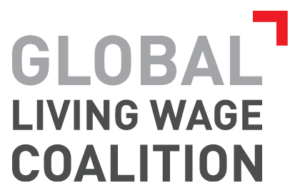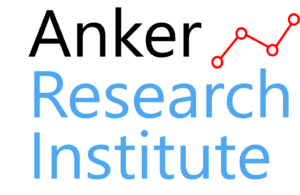The Next Step for Estimating Living Wage and Living Income for Developing Countries
Anker Reference Values for living wages and living incomes are based on a new methodology developed by Richard and Martha Anker and Ian Prates. This new methodology has the potential to greatly increase the number of countries for which credible and internationally comparable living wage and living income estimates are available. These reference values take advantage of the availability of 40 internationally comparable, quality-assured Anker methodology studies carried out primarily under the auspices of the Global Living Wage Coalition. Anker Reference Values are much less expensive to produce than full studies, but are none-the-less still internationally comparable and easily updated every year. These reference values will enable discussions about living wages and living income to take place in countries where it has not yet been possible to organize and fund a full quality-assured Anker methodology living wage or living income study.
View all Reference Value reports
Background
Living wages and living incomes are needed to ensure decent work and decent living standards for workers. The Anker methodology is now widely accepted as the gold standard for measuring living wages and living incomes and it has played an important role in catalyzing wage and income improvement in global supply chains. As of June 2020, quality-assured living wage benchmark studies using the Anker methodology have been completed in 40 locations in 23 countries. There are also now widely accepted Global Living Wage Coalition and the Living Income Community of Practice definitions of living wage and living income:
A living wage is:
“Remuneration received for a standard workweek by a worker in a particular place sufficient to afford a decent standard of living for the worker and her or his family. Elements of a decent standard of living include food, water, housing, education, health care, transportation, clothing, and other essential needs including provision for unexpected events.” – Global Living Wage Coalition
A living income is:
“Net annual income required for a household in a particular place to afford a decent standard of living for all members of that household.” – Living Income Community of Practice
Methodology Details
Basis for Anker Reference Values
Anker Reference Values are based on a regression analysis of 40 quality-assured Anker methodology living wage and income studies that have been carried out so far. These countries are spread across the developing world (8 countries and 11 locations in Africa; 7 countries and 20 locations in Asia; and 8 countries and 9 locations in Latin America). This multivariate regression analysis was able to explain around 85 percent of the variation across these 40 studies in net living wages and living incomes. The best relationships expressed in a model equation from this regression analysis was used to predict separate average net living wages (i.e. required take home pay) and living incomes for developing countries without a quality-assured Anker methodology living wage or living income benchmark study.
Margin of error
Since Anker Reference Values are based on a regression analysis, they have a margin of error or confidence interval. This margin of error is around +/- 10% using a 95% confidence interval.
Mandatory payroll deductions and income tax added to determine gross living wage
Mandatory payroll deductions and income taxes that would need to be paid on a living wage are added to the estimated net living wage to determine the Anker living wage Reference Value that workers need to earn each month to be able to afford a decent but basic standard of living. Mandatory deductions and income taxes are based on national law because taxes needing to be paid are idiosyncratic to each country.
Rural and urban Anker Reference Values
Anker Reference Values distinguish between rural and urban areas in that there are separate urban and rural Anker Reference Values for each developing country. This is a big improvement compared to other approaches such as World Bank poverty lines which have only three values for all developing countries and national poverty lines for many countries which are for the entire country.
What do Anker Reference Values represent?
Anker Reference Values represent typical or average living wages and living incomes for rural and urban areas within each country. They are not location-specific, and so are not representative of region A or C, or city X or Y unlike quality-assured Anker methodology living wage and income benchmarks which are for a specific location. The Anker Living Wage and Income Research Institute (formerly Anker Research Network) is currently working on developing methods for within country regional adjustments.
Relationship to full Anker benchmark studies
Anker Reference Values should not replace living wage and living income benchmark estimates for countries where a quality-assured Anker methodology living wage or income study has been done. Anker Reference Values are not needed for countries that already have a quality-assured Anker methodology living wage or income study, because full studies are based on months of effort and data collection whereas Reference Values have a margin of error and do not provide in-depth analysis and context. In addition, Reference Values are not location-specific as are living wage and income studies.
Updating Anker Reference Values
Anker Reference Values are easy and inexpensive to update each year. Updates will take into consideration: (i) inflation (to ensure that purchasing power of Anker Reference Values are maintained), (ii) economic development (to ensure that Anker Reference Values take into consideration improvements in living standards and expectations as countries develop), and (iii) mandatory payroll deductions and income taxes (to ensure that take home pay and income are sufficient).
Learn More
Introducing Living Wage and Living Income Reference Values (Webinar)
Anker Reference Value Methodology – Technical Description (PDF)
Testimonials
Fairtrade International’s dedication to promoting Living Wages as a human right means we are committed to providing relevant benchmarks to employers and workers, buyers and retailers in our system. That commitment also extends to sectors and industries which influence wages in Fairtrade certified companies. That’s why we asked the Anker research network to develop a methodology to provide credible Living Wage values in those cases where a locally researched, in-depth report is not available. The outcome – the Anker Reference Values – is an innovative tool for calculating wage deficiencies which will help to model the costs of production. It will also help to inform wage negotiations between employers and unions, and price discussions between producers and buyers. We commend the Anker research network for this important achievement and greatly appreciate the support of our partners. Fairtrade is excited that the Anker reference values have been added to the menu of tools of the Global Living Wage Coalition and will be publicly available on the GLWC website.”
– Fairtrade International
Anker Reference Values are an incredibly valuable asset in the fight for global living wages. At SAI, we work with thousands of organizations in over 55 industries and 60 countries on measuring and improving wages. In places where Anker benchmarks are not available, the Reference Values will serve as credible, external reference points which our stakeholders can build upon. This is a significant improvement on previously available references, which have been limited to poverty lines, minimum wages, industry wages, etc. The Reference Values will be a powerful new tool for risk assessments and targeted intervention and support to improve wages across our network.
– Social Accountability International
The Rainforest Alliance newly published 2020 Certification Program defines a bolder, long-term vision to improve farmers and workers livelihoods and advance their human rights to Living wage and Living income. The first essential step in this approach is determining what is the value of living wage & income in some 70 countries in which Rainforest Alliance operate in order to understand the gap that needs to be bridged. The new Anker reference value methodology allows us to scale our new approach centered on transparency and shared responsibility as it increases the number of countries for which internationally comparable and authoritative benchmarks for living wage and living income are available. This is a major milestone in our collective journey on making global food systems more sustainable and responsible by improving the livelihoods of the millions of farmers and workers in agricultural supply chains.”
– Rainforest Alliance
The Anker Reference Values are endorsed by the Global Living Wage Coalition (Fairtrade International, Rainforest Alliance, Social Accountability International and ISEAL Alliance). Development of the methodology was initiated and supported by Fairtrade International and German Federal Ministry for Economic Cooperation and Development (BMZ). Further support was received from Rainforest Alliance, Social Accountability International and Clif Bar & Company.





